
This sign marks the exhibits currently showing in the Steele County History Center through spring 2017.
THE DETAILS ARE, OH, SO LOVELY. Dainty buttons. Lace. Shiny satin. You’ll see them all in Wedding Traditions of Steele County, a newly-opened exhibit at the Steele County History Center in Owatonna.
Nearly two dozen wedding dresses take center stage in this exhibit created by three volunteers and a museum staffer over some six months.
But this exhibit extends well beyond dresses to include wedding history, traditions and genealogy. It’s an impressive visual documentation, especially fitting as the wedding season begins.
Did you know, for example, that a bride didn’t always wear white? Prior to 1840, when Queen Victoria married Prince Albert in an all-white gown, a bride simply wore her best dress, no matter the color. Blue, rather than white, once symbolized purity.
And about that “something old, something new, something borrowed, something blue”…this started as a tradition to ward off evil spirits. You’ll learn that and a whole lot more as you peruse this multifaceted exhibit.
Volunteer Char Ost spent hours researching and planning with team members at meetings and at home as this exhibit came together. She’s a former museum staffer and board president who simply thought the project would be fun. The team reviewed photos of wedding dresses in the museum collection before choosing gowns that would display nicely and were in suitable condition to showcase, she said. Those selected gowns cover the time period from 1896 – 1997.
Missing, though, are wedding dresses from the 1980s and more from the 1990s. People are still familiar with those bridal gowns and those brides are not giving away their dresses, including to the museum, Ost noted. That explains why I didn’t see 1980s dresses reflecting the royal influence of Princess Diana’s wedding gown. I was married in 1982 and my $80 wedding dress definitely did not have beads, sequins, puffy sleeves or a long train like that of the princess.

Margaret Ringhofer wore this dress at her August 25, 1931, wedding. It reminds me of my Grandma Josie’s bridal gown.
As I studied the gowns, grouped by time periods, it was easy to see the period influence. In the glass encased Depression era dresses, conservatism shows in neck lines, fabric choices and style. I spotted a 1931 gown that looks a lot like my maternal grandmother’s, a simple style I considered wearing on my wedding day until discovering I was considerably taller than Grandma Josephine.
In the 1960s, bridal gowns reflected “anything goes,” according to a posted sign. How true of that decade.
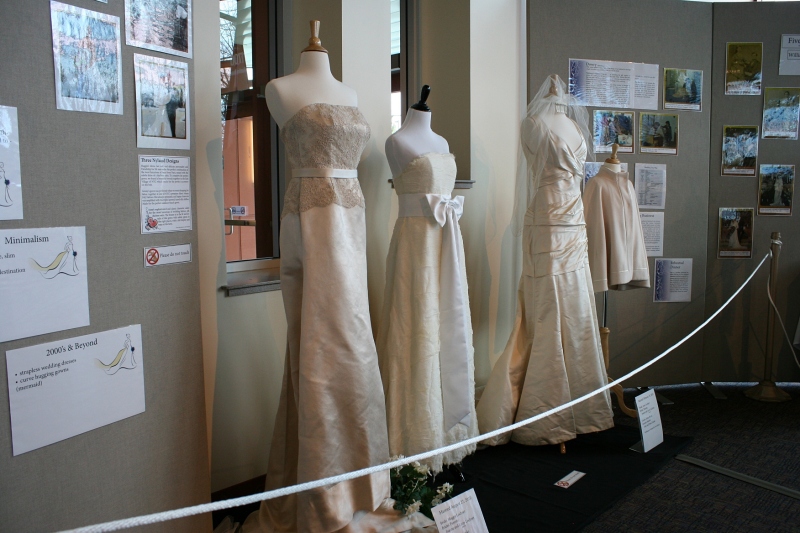
These dresses worn by Maggie, Genny and Anne were designed by Scott Nylund, a 1995 graduate of Owatonna High School. He once worked for music superstar Beyonce’.
Three dresses from the 2000s are also included, specifically sought out for the exhibit. Owatonna native and fashion designer Scott Nylund created the gowns. They are luxuriously stunning with laces from Paris, a brooch from the East Village of NYC and fabrics of silk chiffon and silk duchess satin.
You’ll find other wedding related items displayed, including an invitation, napkin, cake topper, photo and hand-sewn apron from volunteer Char’s 1959 wedding.
Many wedding portraits are interspersed with dresses as is information about traditions like dowries, engagement rings, feeding of the wedding cake and even the bunny hop.
The display gets as personal as Jason and Angie’s wedding vows hand-printed on recipe cards.
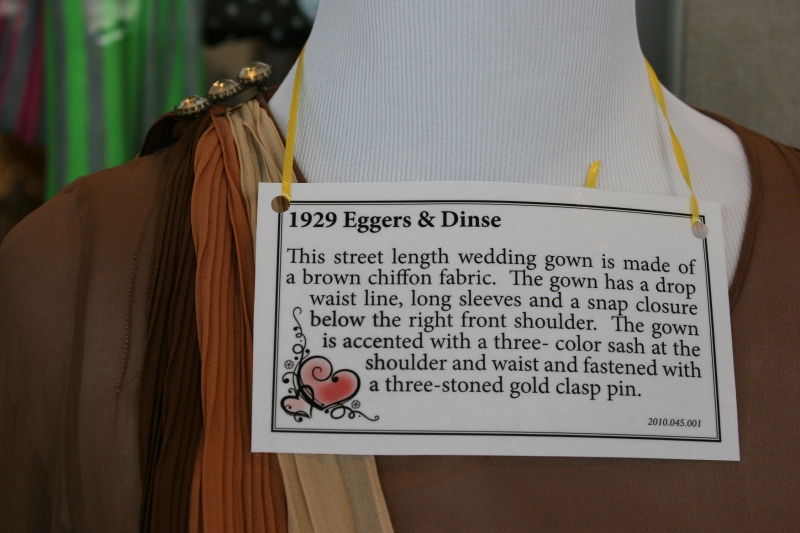
Volunteers worked hard to assure that descriptions of the dresses were accurate, team member Char Ost said.
It’s clear the organizers of this exhibit invested a lot of time in gathering and sharing of information, from the genealogy associated with each dress to the descriptions of the dresses right down to the type of fabric, neckline, sleeves and more.
Once all that research was completed, the crew faced one more challenge. “We did contortions to get some of those dresses on (the forms),” Char said, noting that perhaps corsets also should have been shown.
It was then that I suggested a follow-up exhibit, Wedding Traditions of Steele County II. I loved the exhibit that much.
FYI: Wedding Traditions of Steele County will be on display until the spring of 2017. Museum hours are 10 a.m. – 4 p.m. Tuesday, Wednesday and Friday; 10 a.m. – 8 p.m. Thursdays; and from 10 a.m. – 3 p.m. Saturdays. Closed on Sunday. The history center is located at 1700 Austin Road on the southeast side of Owatonna. Admission is charged. While there, you can also peruse an exhibit on disasters in Minnesota and in Steele County.
On Thursday, June 9, the history center will host Toss the Bouquet: The Wedding Professionals Spin from 7 p.m. – 8:30 p.m. Wedding industry leaders will share their thoughts on wedding trends and also talk about wedding planning details.
Check back tomorrow for Part II in this series on the Wedding Traditions of Steele County exhibit.
© Copyright 2016 Audrey Kletscher Helbling
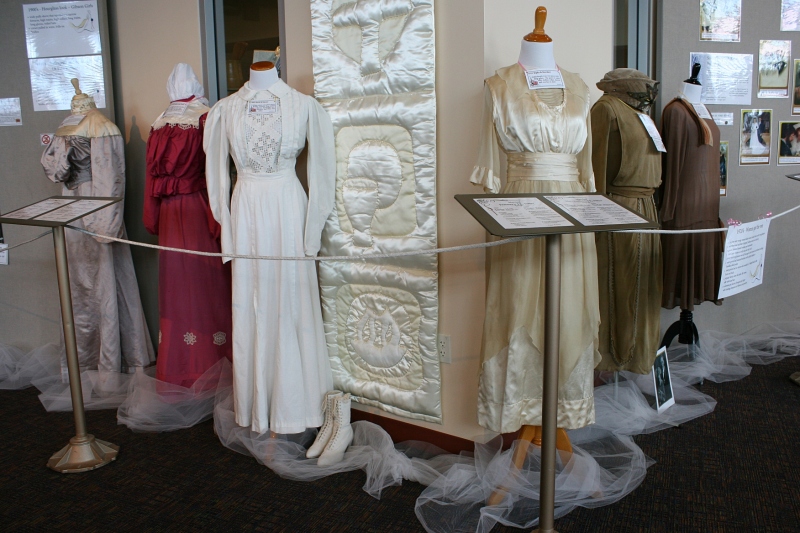
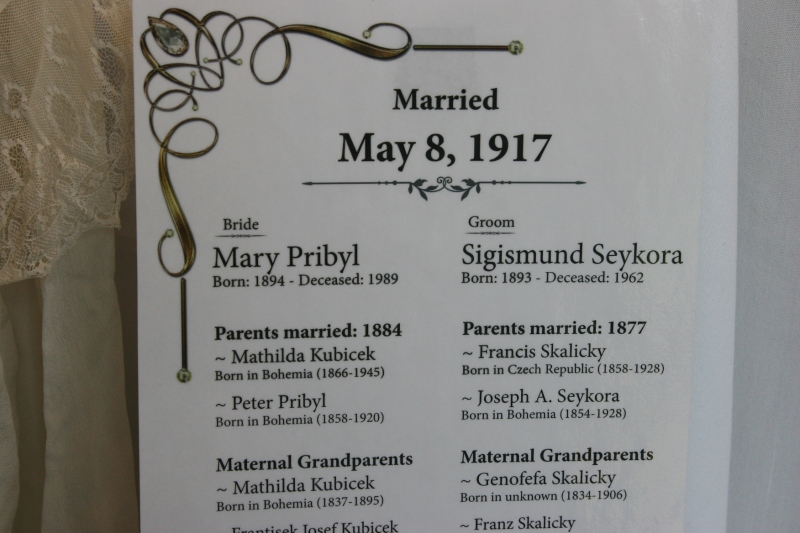

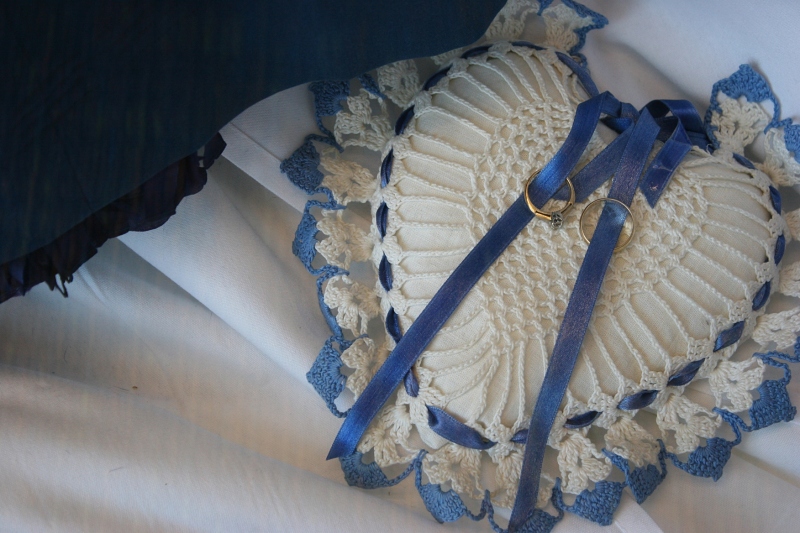
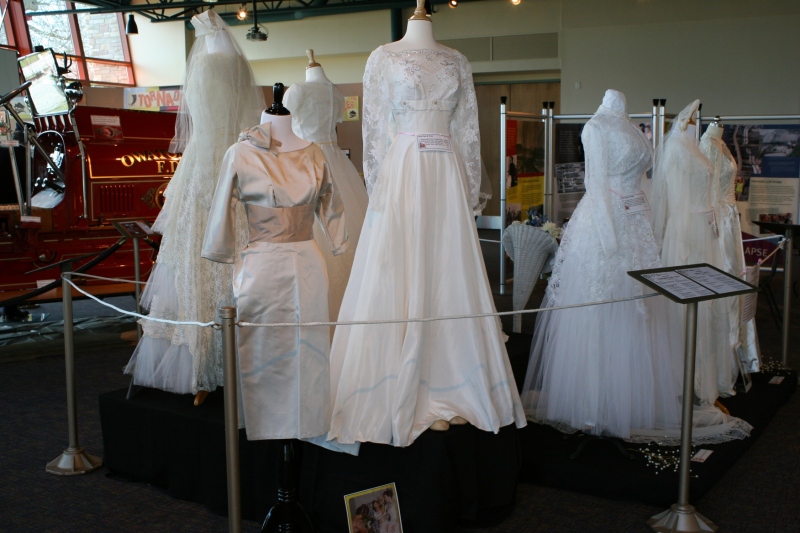
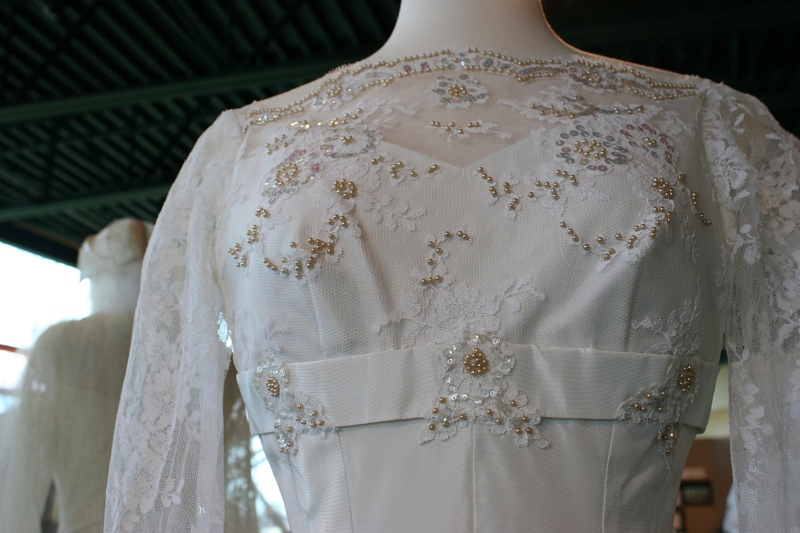
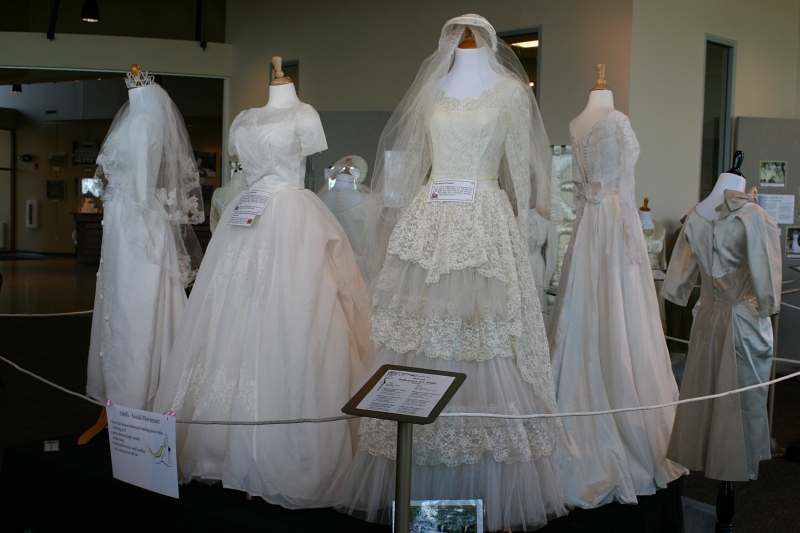
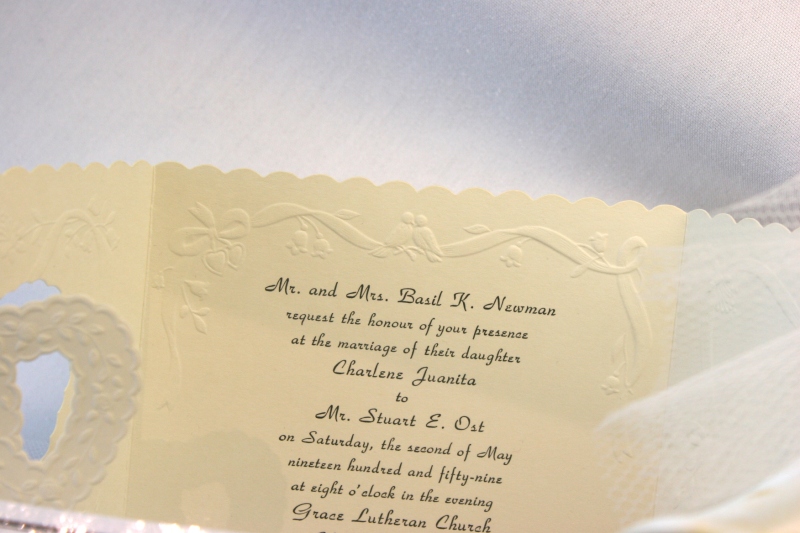
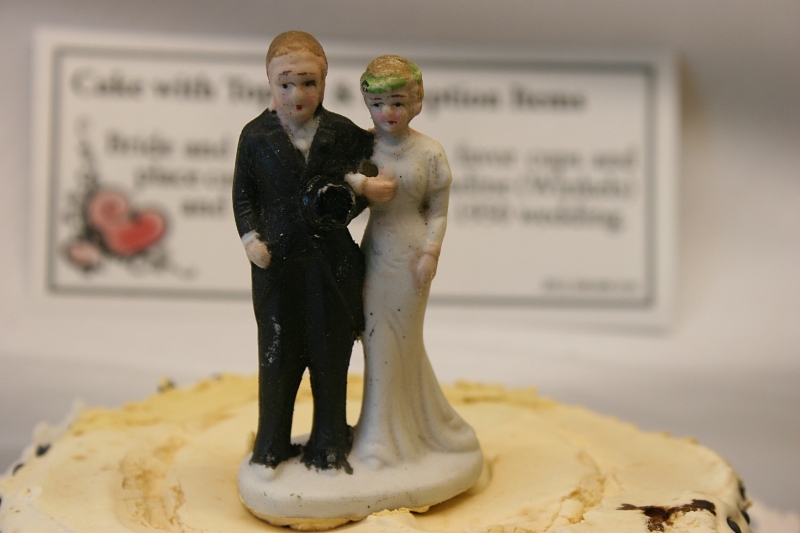
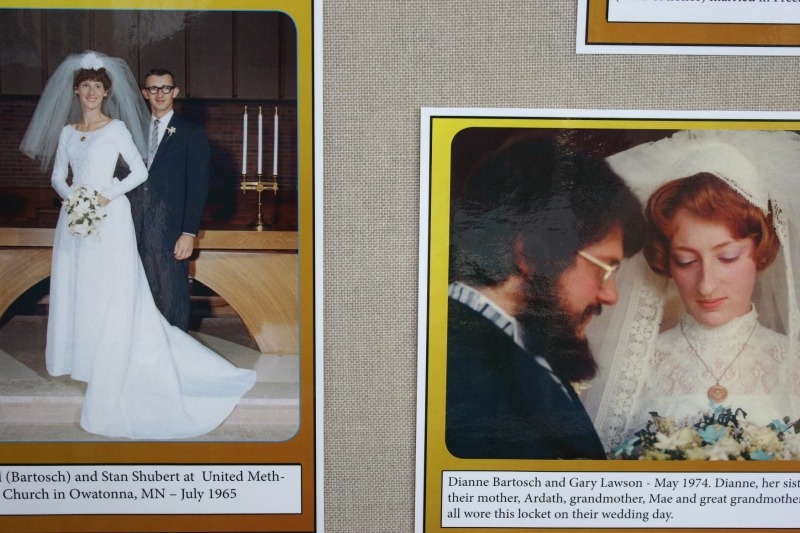
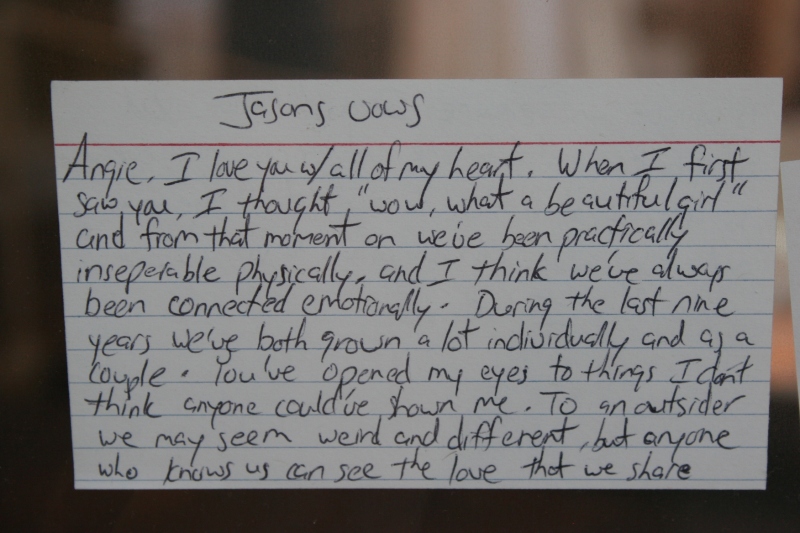
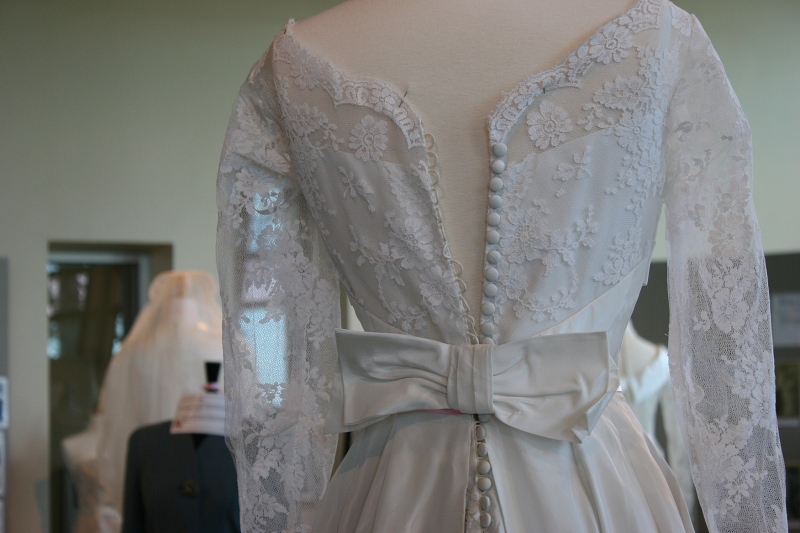

What a lovely exhibit. Those waists used to be tiny, –no wonder the dresses won’t all close on the form. Love the handwritten vows but the dresses would be where I lingered to look more.
My focus was definitely on the dresses, too. It was interesting to see how world events, the economy, etc., impacted wedding dress styles. When the dresses from many decades are showcased in a single exhibit like this, that influence is easy to see. This is truly an outstanding exhibit.
Yup, tiny tiny waists…
What a neat exhibit!! Beautiful!
It is, indeed, spectacular. And beautiful.
What a Beautiful Exhibit – loving your captures and I feel like I am there touring right beside you 🙂 This makes me think back to my Wedding Day and our 12th Wedding Anniversary is coming up in June. I thought for sure I was going to be a 90’s bride, however it took me a little longer and 2004 was the year I married my best friend and adventure partner. Happy Day – Enjoy!
This is a beautiful exhibit. I’m so happy you married your best friend and adventure partner. Life has a way of working out, just not always in our mind’s time-frame.
In a few weeks I will celebrate 34 years of marriage to my best friend/husband.
Congrats to you and your husband!
Thank you.
What an unusual and beautiful exhibit. Your photos are lovely… and you captured the essence of each period – all of the details!
Thank you. I really enjoyed this exhibit. A lot.
What a rich & personal exhibit!
I appreciate the dresses from the 20’s & 30’s.
I do, too. They are elegant in their simplicity.
Interesting display! MY wife has always been a farm Kid type person not liking fancy stuff. In my 30 years of marriage I have seen her in a dress but 2 times both of which were as a brides maid at someone else’s wedding. For our wedding she wore grey pants, a blue ruffled shirt, leather vest and cowboy boots! She has always been frugal with money and thought a wedding dress and big wedding was a waste of money. My daughter on the other hand………………totally different!
I do not see any wedding attire in any of the pictures like my wife would were LOL.
The wedding attire your describe is probably the most interesting I’ve heard of for a bride. She sounds down-to-earth practical. I think I would like her.
Margaret Ringhofer’s dress from 1931 is beautiful. Very cool post Audrey, with some interesting facts!
Thank you, Jackie. There are so many gorgeous dresses in this exhibit to fit every taste and style.
Beautiful dresses. Great job on this post. Very informative for those who missed some of those great decades.
Thank you. I learned a lot about the decades simply by viewing these dresses and reading the info posted.
Incredible beautiful. I seldom ask people to visit my post, but this time I have something, which You might love – crochet tractor. All the tractor covered by crochets.
Thank you so much for directing me to that tractor blanketed in crochet art. It’s truly unique and, wow, what a beautiful piece of art.